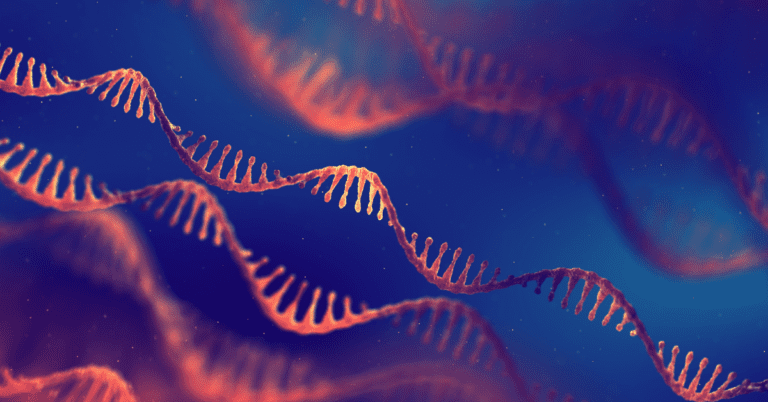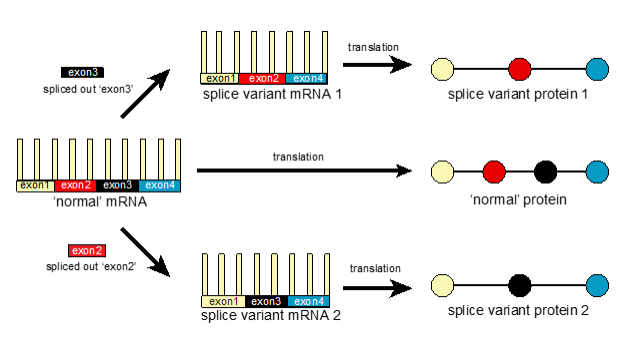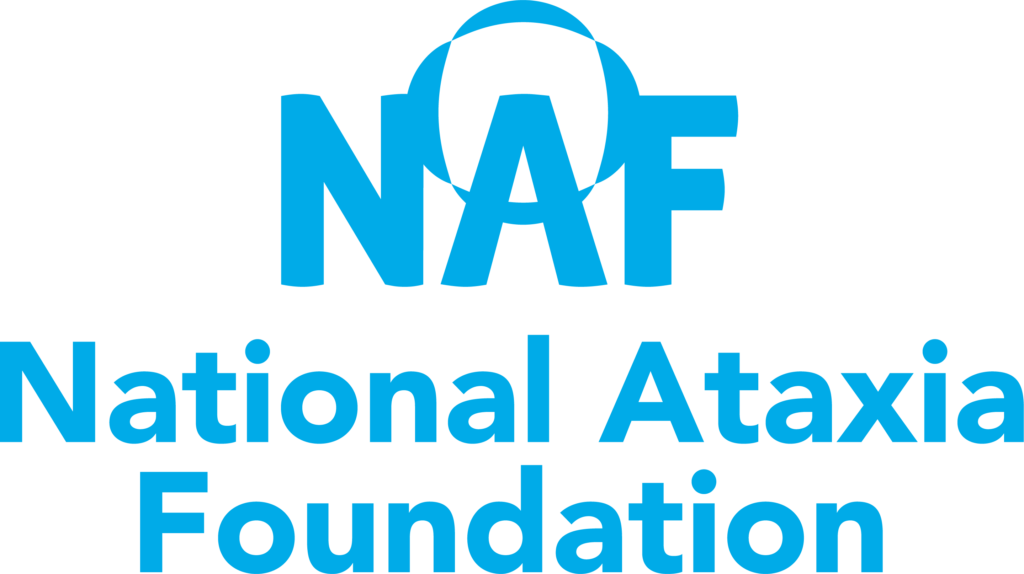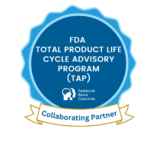
To function properly, our body depends on many essential processes that are moderated by molecules created within us. Creating these crucial molecules, also called proteins, involves multiple steps and precursor molecules (Figure 1). In the first step, the DNA, which serves as the reference blueprint and contains the vital information necessary to build proteins, is converted into mRNA in a process called transcription. The mRNA then acts as a working blueprint, like the ones you would bring out on a job site and is read while constructing proteins in a process called translation.

Figure 1: General overview of protein synthesis. Figure created by Paige Chandran Blair.
What Is Alternative Splicing?
Each step of protein generation is tightly regulated and subject to many different types of modifications to allow our body to efficiently use the available resources to execute its many complex functions. One example of such a modification is a process called alternative splicing, which occurs on the mRNA level. Alternative splicing allows multiple different proteins to be created from the same mRNA by cutting out sections of the mRNA called ‘exons’ (Figure 2). By altering the combination of exons in an mRNA, the body can create proteins of varying sizes and shapes and since size and shape are imperative to determining the function of a protein, changing these features allows the body to create proteins with different functions.

Figure 2: Overview of alternative splicing. NOTE: there are two example splice variants shown above but more are possible. Figure by Paige Chandran Blair.
How Is Alternative Splicing Regulated?
Alternative splicing is a tightly controlled process to ensure that the right regions of mRNA are cut out at the right time. The mRNA contains regions before and after the exons that are to be cut out that serve as ‘cut signals’. These cut signals are recognized by proteins called ‘splicing factors’ that directly attach to mRNA and help facilitate alternative splicing. By controlling when and which ‘cut signals’ are acted upon by splicing factors, alternative splicing becomes a timely and spatially controlled process.
How Does Alternative Splicing Relate To Disease?
Alternative splicing is essential to the body and allows us to create proteins with highly specialized functions and features. When alternative splicing is mis-regulated, it can also be a driving cause of many diseases such as neurological disorders and cancers. Recent research suggests that alternative splicing might play a role in the neurodegenerative disorder spinocerebellar ataxia type 1 (SCA1). SCA1 is caused by a mutation, or change in the DNA that encodes for a protein called ataxin-1. In the study, scientists found that the mutation in ataxin-1 may interfere with the regulation of alternative splicing. If you are interested in the details of this study, you can read last week’s SCAsource article.
If you would like to learn more about alternative spicing, take a look at these resources by the National Human Genome Research Institute and the DNA Learning Center.
Snapshot Written by: Paige Chandran Blair
Edited by: Larissa Nitschke, PhD
Read Other SCAsource Snapshot Articles

Snapshot: O que é Distonia?
Distonia é uma desordem que afeta a maneira como uma pessoa se move. Mais especificamente, pessoas com distonia têm contrações musculares involuntárias, que podem causar posturas anormais. A distonia pode Read More…

Snapshot: What is Neuropathy?
Our nervous system consists of the central and the peripheral nervous system. The brain and spinal cord are components of our central nervous system (CNS), while the peripheral nervous system Read More…

Snapshot: ¿Cómo miden los médicos la severidad de la ataxia en los pacientes?
La coordinación de movimientos finos y efectivos es esencial en las tareas diarias, como hablar o caminar. La capacidad de orquestar exitosamente estos movimientos se denomina comúnmente “coordinación motora”. Si Read More…










